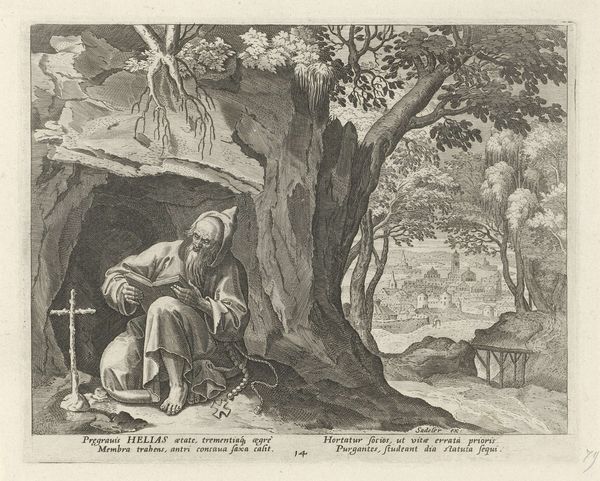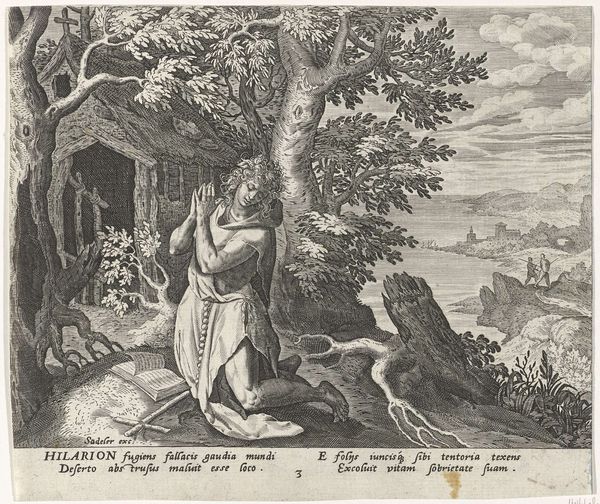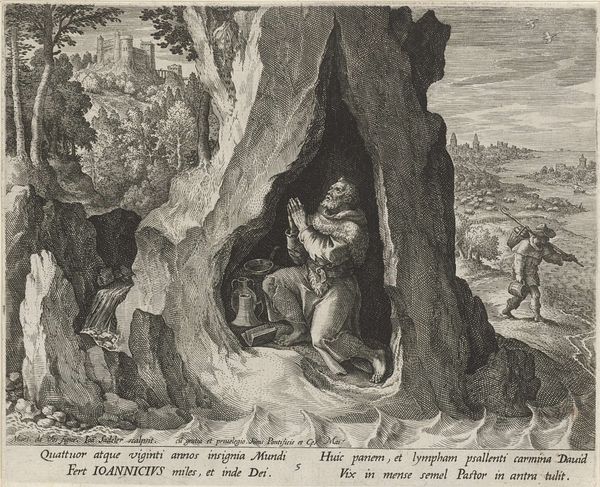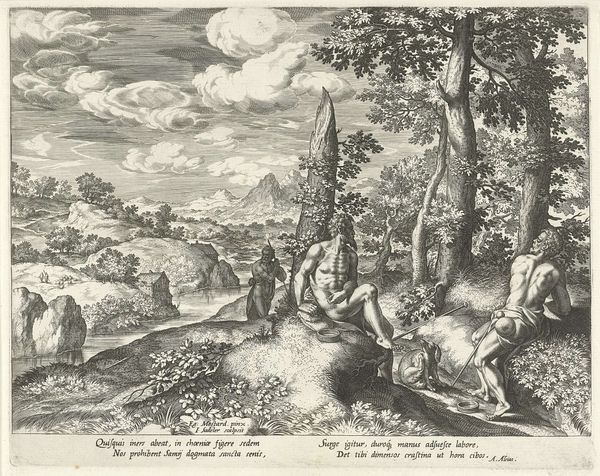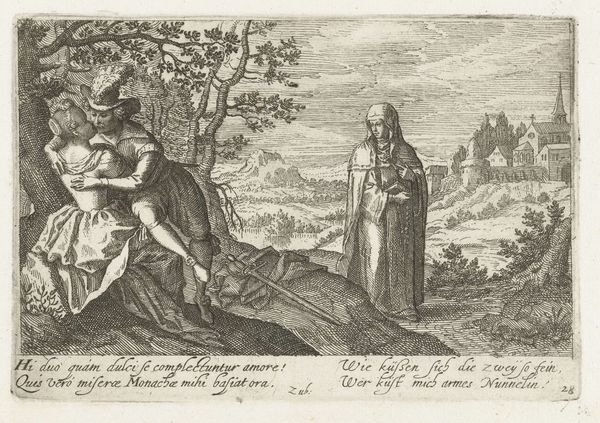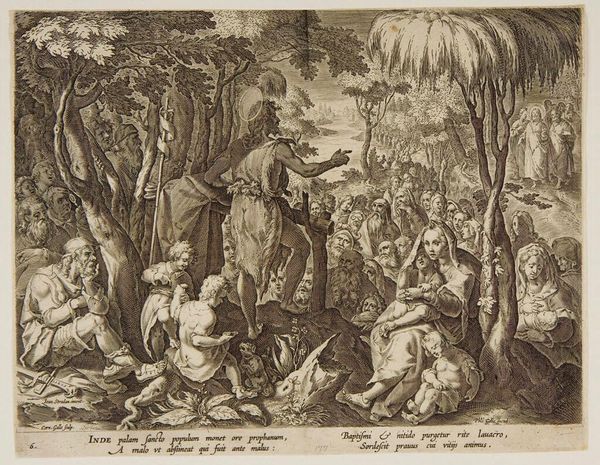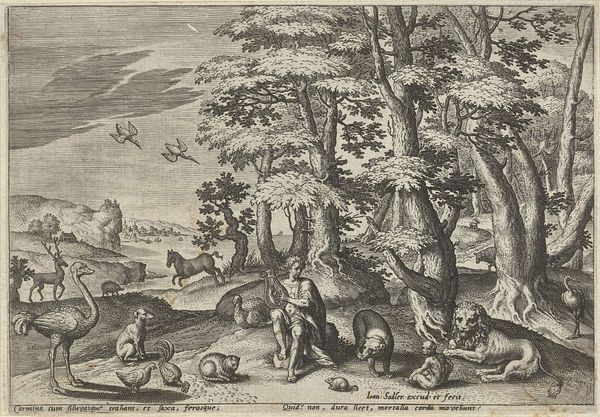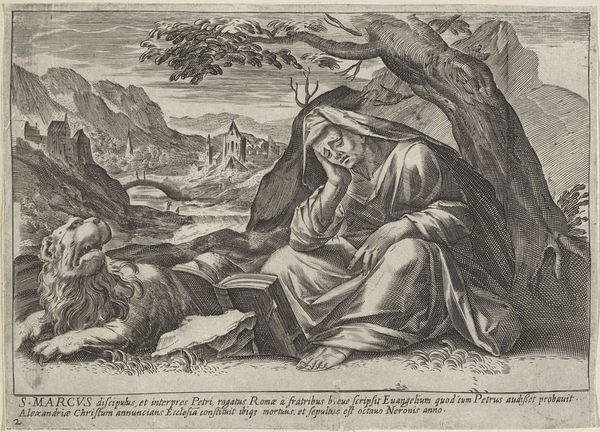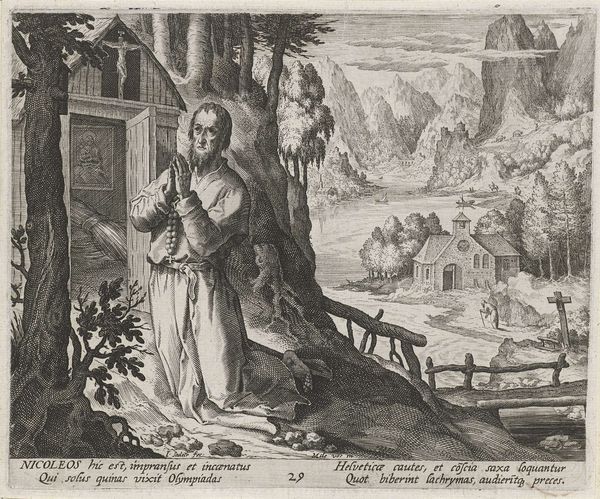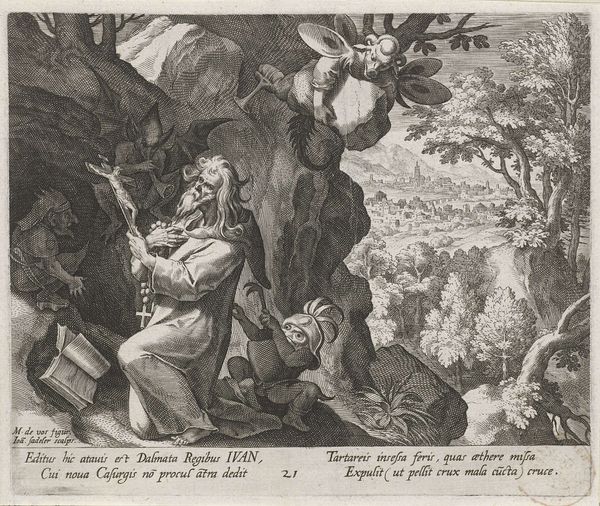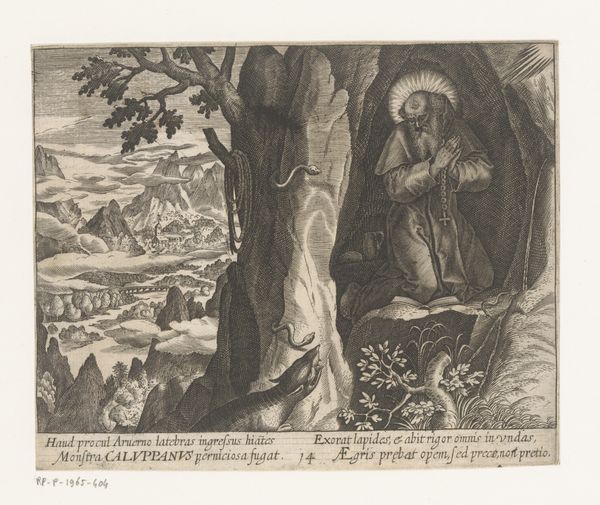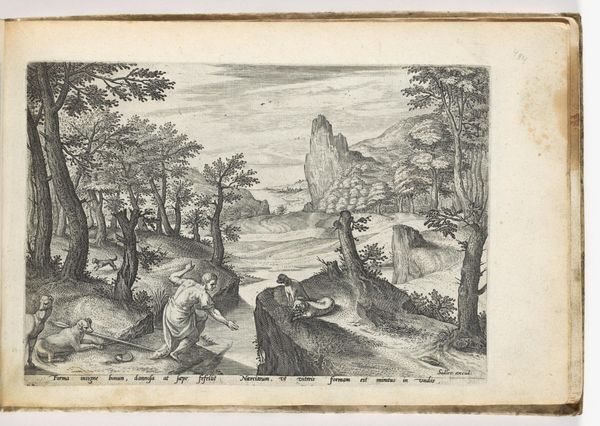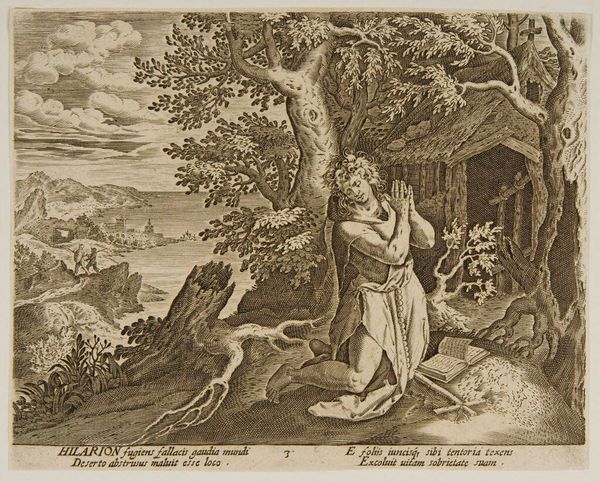
engraving
#
medieval
#
landscape
#
history-painting
#
engraving
Dimensions: width 198 mm, height 164 mm
Copyright: Rijks Museum: Open Domain
Curator: Johann Sadeler I created "Caluppanus de kluizenaar" in 1594, an engraving now housed here at the Rijksmuseum. It's quite a piece, weaving together landscape, medieval themes, and elements of history-painting all in one image. Editor: My first impression? Bleak. It's starkly beautiful but there is such a weightiness to it. The man huddled in the cave seems to be warding something off or protecting himself. And are those serpents I see around the frame? Gives me the shivers. Curator: It is interesting that you focus on bleakness. From an intersectional lens, consider the historical context of monasticism and isolation—these acts weren't simply about individual piety but often represented a form of resistance to societal norms, especially during times of religious and political turmoil. The snakes could represent the "monsters" defeated by the Monk CALUPPANVS. The text below the artwork indicates the landscape around the Monk gains solace due to him driving away terrible monsters in that location. Editor: Right! That flips things on its head, doesn't it? So, instead of just a hermit cowering in a cave, we see this figure as actively confronting malevolence. The cave itself, previously oppressive, becomes a symbol of refuge and agency. The serpents may represent all those evils or personal struggles. Maybe I should feel less creeped out and more empowered by the image...or at least sympathetic to Caluppanus' plight. Curator: Indeed, thinking of the socio-political factors that might inform a reading of the piece is also central. The role of the monastery in offering safety in times of danger, intellectual thought, and in its way defying norms is also vital here. Editor: The detail in the landscape is fascinating too, despite the limited medium. There is this vast expanse visible through the cave opening; an almost idyllic vista with sharp, jagged mountains on the horizon. This gives a powerful contrast with the confines of the cave, underscoring the monk's conscious choice to detach himself from earthly pleasures. Perhaps its a mental state depicted metaphorically as place. He needs isolation to combat dark entities, yet, far from bleak, there is an entire vista within reach. The monk seems the antithesis of the trope about 'people hiding under rocks'. The rock *itself* has become a platform. Curator: Ultimately, I think it's the enduring resonance of that dichotomy—the solitary figure facing formidable forces—that makes this engraving so compelling even now. It offers a glimpse into personal choices and spiritual dedication, and how this is all connected to larger societal systems. Editor: For me, it's the image's transformative quality; it's one thing to encounter it at face value, but completely changes again the more we investigate and question it.
Comments
No comments
Be the first to comment and join the conversation on the ultimate creative platform.
